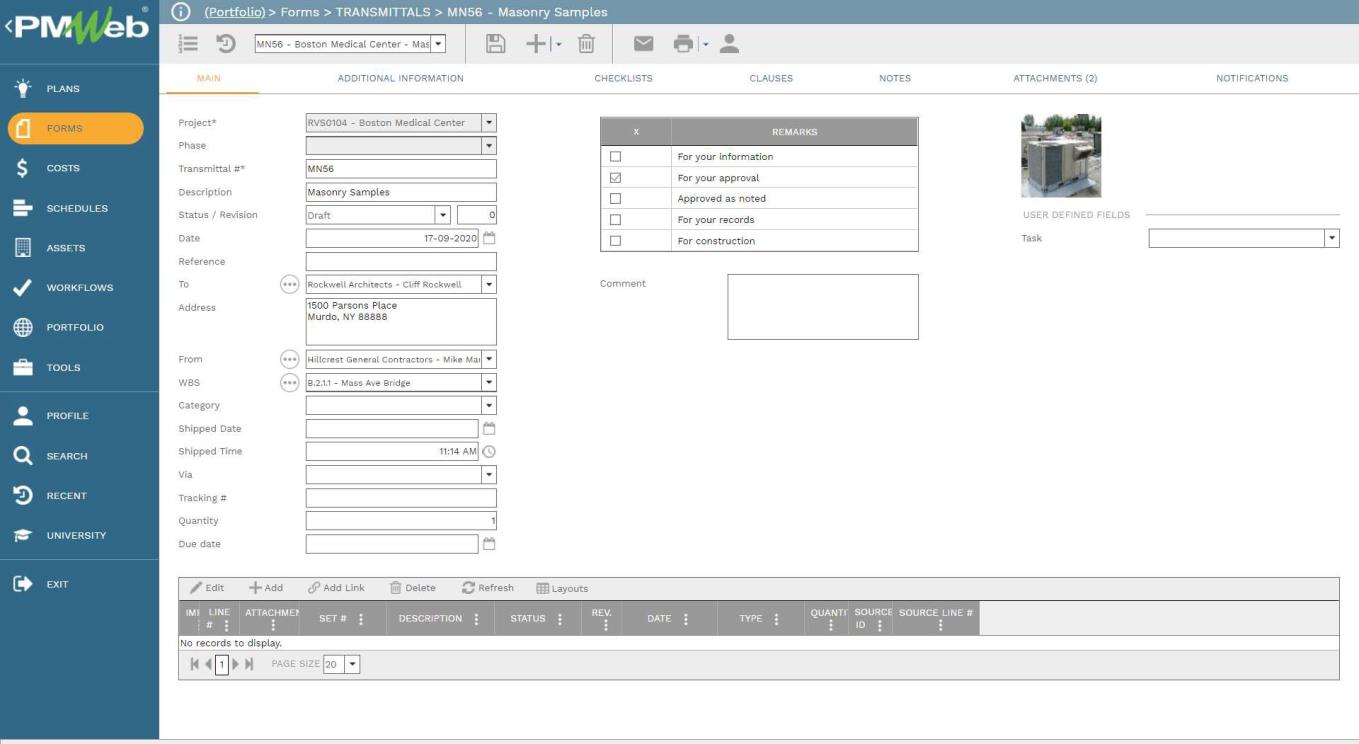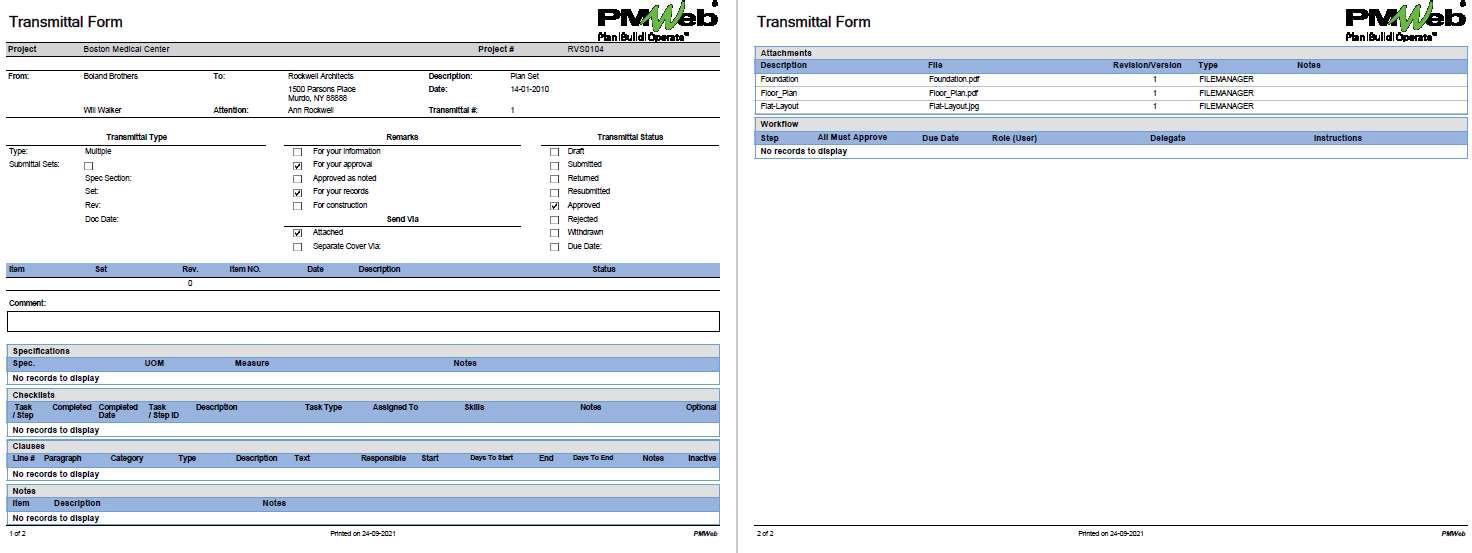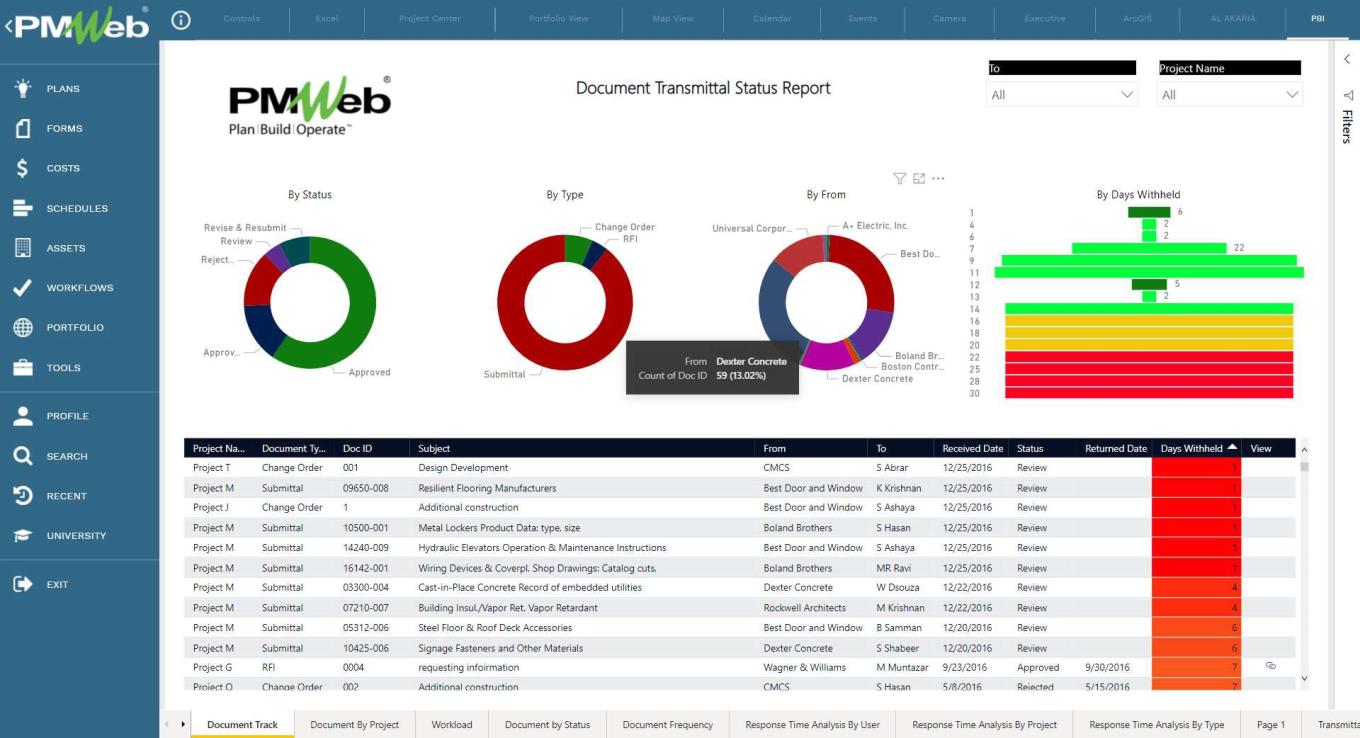The transmittal process is one of the many communication management processes that must be monitored, evaluated, and reported on in any project control system (PCS) regardless of whether it was managed by the project owner or contractor. On construction projects, transmittals are used to keep detailed records of information communicated between the different parties on a project. It can be considered as a cover page that captures the subject of the communication, when it was sent, who should receive it, to whom it should be distributed, and what actions the sender of the communication is requiring the recipient to provide.
The transmittal template was a very popular communication process before the web-enabled collaboration and digitalization of project management processes became available. For example, technical submittals are now directly managed using the digitalized submittal management system. Nevertheless, there are still a few communication templates that continue to need the transmittal process for example sharing the meeting minutes, sending the Issued for Construction (IFC) drawings, and revisions to contract documents, among others.
The PMWeb transmittal module is one of the default modules for which the different project entities can transmit project communications. The ‘Form’ entity provides the details specific for each transmittal, such as WBS level, category, project stage, transmitted document or record, reference number, date, and due date, among others. PMWeb also allows adding an unlimited number of user-defined fields to better describe the transmittal if this is needed.

As detailed above, all documents transmitted by the ‘From’ entity are usually already uploaded to the PMWeb document management repository. There are no set limits to the number of documents that can be attached to the transmittal, as this has no impact on the transmittal file size since they are simply links to where the documents are stored. In addition to the attached documents, the PMWeb transmittal module allows the linking of many records created in PMWeb. These records can include emails imported to the PMWeb email repository, hyperlinks to products’ catalogs and companies’ websites, and documents stored in third-party document management systems for which integration has been created with PMWeb.
The transmittal module has a workflow to detail the parties involved in the submit, review, and approval process. These workflows can include conditions for which the transmittal workflow branches into different review processes depending on the transmittal attributes, such as category stage. PMWeb captures the comments made by each reviewer and when each review step was completed.
Since it is a vital requirement on all projects to formally communicate the transmittal, PMWeb allows designing the transmittal form in any desired form or format to match the project’s management plan. This output form can be designed to include the transmittal’s general information, details of the checklist items, attached documents, workflow details, and other details captured in the transmittal module.

Like all other PMWeb project control system (PCS) processes, a report can be designed to capture the details of all transmittals. The report form and format can be completed as per the requirement of the entity managing the project control system.

Reference
The content of this article was extracted from the book titled “Let’s Transform: Enabling Digital Transformation of Capital Construction Projects Using the PMWeb Project Management Information System – 2nd Edition” written by Bassam Samman.
The book provides project owners with oversight on how technology available today can support their efforts to digitally transform the management of their projects’ portfolios. For each capital project life cycle stage, PMWeb is used to detail how the relevant project management business processes can be digitalized to enforce transparency and accountability in delivering projects. In addition, MS Power BI was used to show how the real-time, trustworthy data captured in PMWeb can be aggregated, modeled, monitored, evaluated, analyzed, and reported at anytime, anywhere using any device.



